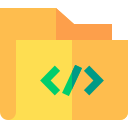
Integrating Open Source in Modern Education Systems
Open source technologies are rapidly transforming the landscape of modern education systems around the globe. As digital learning expands and evolves, educators, administrators, and students alike are discovering the powerful advantages offered by open source solutions. From cost savings to enhanced customizability, open source fosters collaboration, innovation, and inclusivity in both teaching and learning. This page explores the multifaceted impact and practical considerations of integrating open source tools, platforms, and philosophies within today’s educational frameworks.
The Benefits of Open Source in Education
Open source platforms inherently promote collaboration among students and educators. By allowing users to access, adapt, and enhance source code, these platforms inspire a community-driven approach to problem-solving and knowledge sharing. Students can work together on projects, contribute to real-world solutions, and learn through practical engagement with software development and technologies. This collaborative ethos aligns well with pedagogical trends that emphasize project-based and peer-to-peer learning, equipping students with both technical and interpersonal skills for the modern workforce.
One of the most compelling advantages of open source is its ability to significantly lower the financial barriers associated with educational technology. Proprietary software licenses and subscriptions can be prohibitively expensive, particularly for underfunded schools or institutions in developing regions. Open source alternatives, which are often free to use and modify, allow schools to allocate their resources towards other important initiatives. This accessibility ensures that all students, regardless of their background, have equal opportunities to engage with cutting-edge digital tools.
Open source software empowers educators to tailor learning platforms and resources to the unique needs of their students. Instead of being confined by rigid commercial software, teachers and IT staff can modify and extend open source solutions to support differentiated instruction, accommodate diverse learning styles, and meet specific curricular goals. Customization also allows for better integration with local standards and the ability to innovate rapidly in response to evolving pedagogical trends, creating a more dynamic and responsive educational environment.
Overcoming Technical Complexity
Adopting open source technologies can be technically demanding, particularly for institutions without extensive IT support. Issues such as software installation, maintenance, and system integration can present significant barriers. However, these challenges can be addressed through dedicated professional development, collaborative partnerships with the open source community, and by leveraging managed open source services. Building technical capacity gradually and cultivating a culture of continuous learning among staff ensures long-term success and sustainability.
Ensuring Security and Reliability
Security and reliability are critical concerns in educational environments, where safeguarding student data and maintaining consistent access are paramount. Open source solutions, if selected and managed properly, can be just as secure and stable as proprietary options. Engaging actively with developer communities helps in receiving timely security patches and updates. Additionally, institutions can implement rigorous security protocols and conduct regular audits to minimize risks, while taking advantage of transparent source code to identify and address vulnerabilities.
Gaining Administrative Support
Administrative buy-in is essential for the effective adoption of open source technologies in schools. Decision-makers may harbor skepticism about the perceived quality, security, or sustainability of open source tools. To overcome this, educators and advocates must present clear evidence of cost savings, successful case studies, and the pedagogical benefits open source can offer. Demonstrating alignment with institutional goals—such as digital equity, innovation, and student empowerment—can help secure lasting administrative support for open source integration.
Previous slide
Next slide


Integrating open source tools in the curriculum provides a hands-on avenue for teaching digital literacy and responsible citizenship. Students not only acquire technical skills but also learn how to navigate a rapidly changing information landscape with discernment and ethics. Exposure to open source practices encourages critical thinking about intellectual property, privacy, and the societal implications of technology use. As students contribute to and learn from global open source projects, they become active participants in digital society rather than passive consumers.

A thriving open source ecosystem relies on active, engaged communities. Schools can encourage the formation of clubs, workshops, or online forums where teachers and students share knowledge, resources, and code. These communities promote peer support, mentorship, and cross-disciplinary collaboration, driving innovation and enthusiasm. When educators and students collaboratively develop or adapt educational software, they build a shared sense of ownership and pride, turning technology adoption into a participatory, school-wide endeavor.

Open source is more than software—it is a mindset. By aligning teaching methods with open source principles, educators can emphasize inquiry, problem-solving, and continuous improvement. Encouraging students to contribute to actual open source projects as part of their studies allows for authentic, real-world learning experiences. This pedagogical approach blurs the line between learning, creating, and giving back, equipping students with the adaptability and collaborative spirit needed in the digital age.
Join our mailing list
